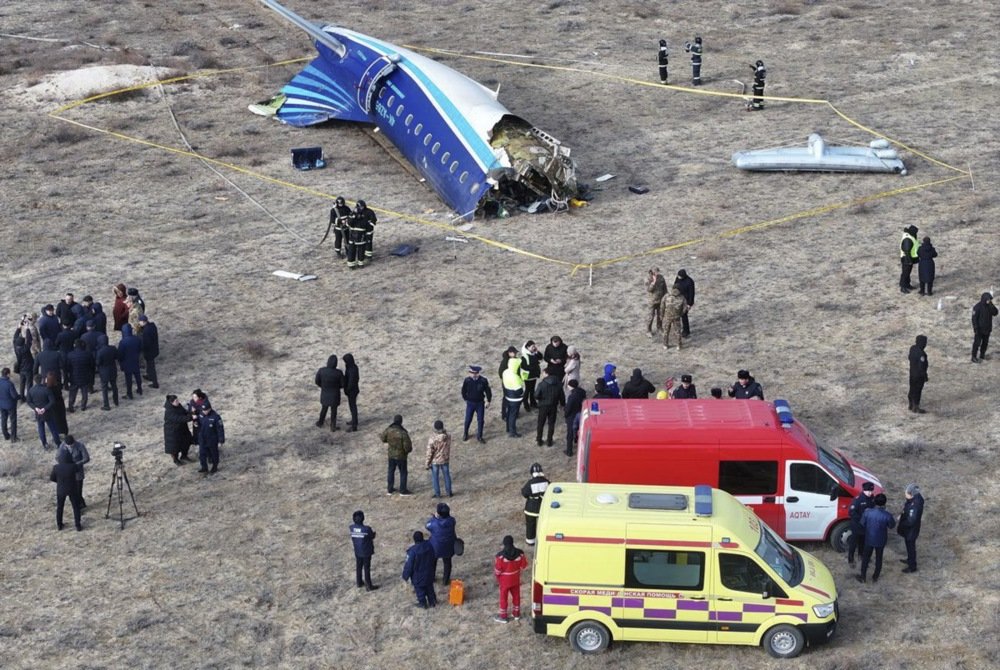



Two Russian airports have faced shutdown on average every day this year due to Ukrainian drone activity. A noticeable increase was recorded this year — on 6 and 7 May, just days before Russia celebrated Victory Day, the country faced some of the worst disruption to civil aviation since the start of the war as Ukrainian drones attacked a number of Russian regions, paralysing over 10 civilian airports.
According to the most conservative estimates, air carriers could already have lost about a billion rubles (€11 million) this year due to the disruption. But to exclude risk altogether, airport shutdowns would need to be even more widespread, experts say, with air traffic restrictions introduced over most of central Russia in case of drone activity — something that Russian air authorities are not willing to do.
Novaya Gazeta Europe calculated that on 6 and 7 May alone, air defence operations forced airports to cease operating 35 times. According to the Russian Association of Tour Operators, carriers delayed or cancelled more than 350 flights, affecting more than 60,000 people. Passengers complained of waiting for hours without information or being provided with food and water. Some spent over seven hours in planes stuck on the runway.
Airfields have faced at least 217 closures this year — more than the whole of 2023, when there were 58, and 2024, when there were 91, combined. We counted at least 366 such incidents from February 2023 to May 2025.
In 2023 and 2024, most airport closures occurred in Moscow and Kazan. Airports in other cities suffered far fewer shutdowns.
In 2025, cities in western Russia have been most heavily affected, including Saratov, Volgograd, Nizhny Novgorod and Penza, with drones targeting large industrial and oil-refining centres.
Russia has introduced Carpet Plan to detect unidentified flying objects in the vicinity of an airport. When that occurs, planes must leave the danger zone. For three years, this has become routine for air traffic in the European part of Russia.
The operation that comes into effect when Russian airports face a risk of drone activity is known as Operation Kovyor, or Carpet Plan. This means that all aircraft that are on the ground must remain there, those that can immediately land must land, and those that cannot land must reach maximum altitude and leave the danger zone.
Since November 2023, Carpet Plan has been introduced at 37 civilian airports, chiefly in Moscow, Kazan, Saratov and Nizhnekamsk. Moscow airports are the worst affected, while the airports in Tatarstan that have also faced temporary flight restrictions have probably been targeted due to the strategic military facilities there, such as the Iranian Shahed kamikaze drone plant in Yelabuga, which was struck by Ukrainian drones in April 2024.
Aviation experts Novaya Europe spoke to said removing aircraft from the skies in case of drones was not enough to guarantee the safety of passengers on its own.
“Whenever air defences are operating, all civilian aircraft must be removed from the area,” says Dmitry Ivanov*, an aviation specialist. “Even if the intended targets and civilian aircraft are at different altitudes and are completely different sizes.”
Not all air defence systems can “distinguish a low-flying drone from a passenger aircraft coming into land”.
The problem is that not all air defence systems can “distinguish a low-flying drone from a passenger aircraft coming into land,” air security expert Roman Lonin* agrees.
Lonin believes an airport closure zone should correspond to drone flight range. If a drone flies to Murmansk, in the Russian Arctic, then the no-fly zone should have a radius of 1,500km from the Ukrainian border, he says. In other words, instead of temporary restrictions, the entire European part of Russia up to the Urals should be subjected to Carpet Plan.
Until that happens, civilian aircraft could fall prey to air defence system identification errors. In September, air defence systems in the Murmansk region fired at a light-engined aircraft after it was mistaken for a drone. There were no casualties, but in December, a tragedy occurred when Russian air defences near the Chechen capital Grozny mistakenly shot down an Azerbaijan Airlines passenger plane, killing 38.
Many Russian airports operate both military and civilian flights, making them potential targets. In August 2023, Ukrainian drones attacked an airfield in Pskov, in Russia’s northwest, where several Ilyushin Il-76 military transport aircraft were destroyed and a fuel depot was damaged.

The crash site of an Azerbaijan Airlines passenger plane near Aktau, Kazakhstan, 25 December 2024. Photo: EPA-EFE/AZAMAT SARSENBAYEV
When airports close, carriers either delay or cancel dozens, or even hundreds, of flights. According to our estimates, the average closure lasted about 3.5 hours. But in reality, passengers often have to wait longer due to the fact that delayed departures create a knock-on effect in the schedule. Airlines need anywhere from several hours to several days to return to normal, Lonin explains.
However, Ivanov says that the crisis that struck Russian aviation earlier this month was resolved relatively quickly, in two to three days, because it was still the low season. “Airlines have spare planes, there are also plenty of crew,” he explains. If the drone attacks had occurred in the peak months of July or August, the disruptions would have been much more serious.
If an aircraft is close to its destination when Carpet Plan is introduced, it is often forced to land at an alternate airfield. At least 920 flights have been redirected to alternate airports in total since the outbreak of the war under Carpet Plan. This alone could have cost Russian airlines more than 900 million rubles (€10 million).
Airlines are also forced to pay for hotels and compensate passengers for the costs of missed connections, Ivanov said. Cumulative losses are therefore likely to be in excess of 1 billion rubles (€11 million) in all.
For now, these expenses are unlikely to lead to a rise in ticket prices, says Lonin. Airlines build economic models many months in advance and factor cases of force majeure into the price of the flight. The May shutdowns will most likely have already been factored into ticket prices well ahead. But if closures of this scale occur on a weekly basis, this will, of course, affect flight prices, he concludes.
*Names have been changed.
The Russian government has banned independent media. We were forced to leave our country in order to keep doing our job, telling our readers about what is going on Russia, Ukraine and Europe.
We will continue fighting against warfare and dictatorship. We believe that freedom of speech is the most efficient antidote against tyranny. Support us financially to help us fight for peace and freedom.
By clicking the Support button, you agree to the processing of your personal data.
To cancel a regular donation, please write to [email protected]
VPNovaya
Help Russians and Belarusians Access the Truth
